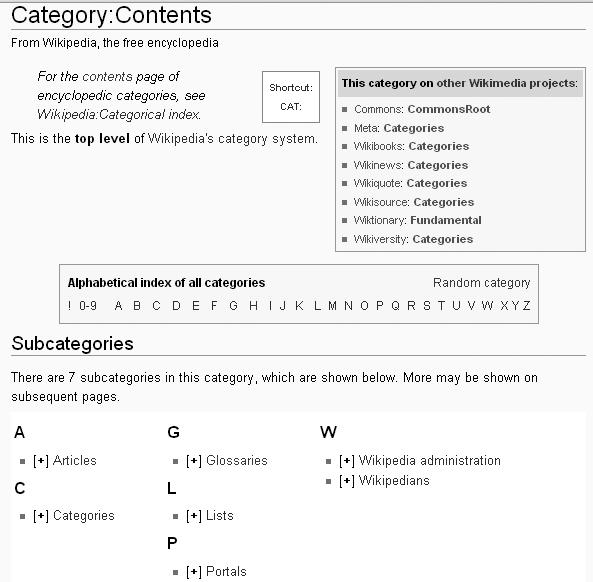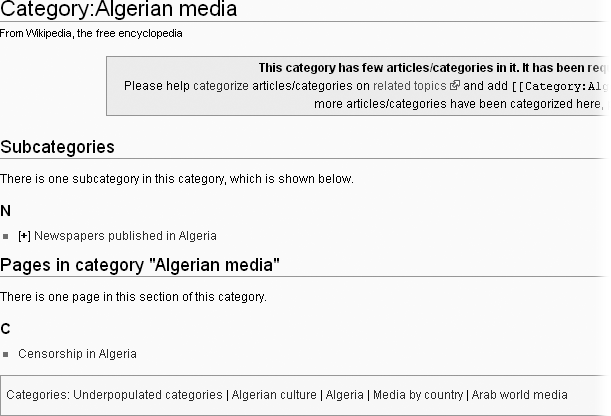Category Pages
As you work on adding good categories to articles, you’ll encounter category pages like the one in Figure 17-1, and as a reader, you’ll find them useful for getting to articles you’re interested in. But there’s more to category pages. They’re created and managed by editors, and, like all other pages at Wikipedia, there are times when you, as an editor, can edit them to improve them. This section explains what you need to know.
Hierarchy: The Categorizing of Category Pages
Every category page should have at least one parent—a higher-level category. (The exception, of course, is the category page at the very top of the hierarchy.) Or, to put it differently, every category page but the very highest (shown in Figure 17-5) should be within a subcategory of at least one higher-level category.

Figure 17-5. The highest category in Wikipedia—the only category that doesn’t belong to a higher category—is Category:Contents. It has seven subcategories and (not shown) one page that belongs to the category but isn’t in a subcategory, the page Wikipedia:Contents.
Figure 17-6 shows a category page that itself is assigned five categories.

Figure 17-6. The category page Algerian media has five parent categories—one is a cleanup category; the other four are higher level topical categories. Put ...
Get Wikipedia: The Missing Manual now with the O’Reilly learning platform.
O’Reilly members experience books, live events, courses curated by job role, and more from O’Reilly and nearly 200 top publishers.

